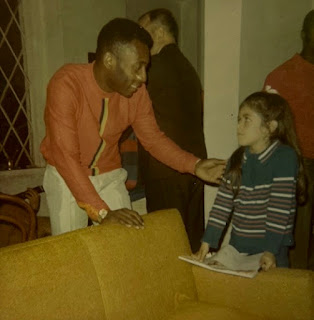(revised on Medium) On a sachet of brown sugar (series: notes to myself)
Mid-morning, somewhere in Italy. Seating at a bar, in an elegant square, summery weather, a kind breeze, refreshing. An espresso macchiato comes with a brown sachet of sugar, to be added if you wish. I look at it. I look around. I have time to think. How do people deal with this task? Can one divide people, the sugary kind, into types according to how they open a sachet of sugar?
A student, with interesting tattoos on her left shoulder, opens it by pinching the two sides and pulling them, gently ungluing the sachet. It requires her to use four fingers, each couple pinching a side of the sachet. She is attentive and careful. She better be. I know that feat is demanding. Too much force and the sachet may give in abruptly, spreading the sugar everywhere. Too little, and the little shell will hold on to its content and won’t be convinced to release its treasure. I love the cautions determination. She puts her hands together, palms touching at the bottom as if praying, to measure the effort more gradually. She succeeds. I’m not sure it is a smile, but now the tattoo, which seems like a tiger from here, is moving forward, to sweeten the cappuccino. She is left-handed. The sachet is no longer the focus of her attention. The whirlpool created by the spoon is. The sachet will be nothing but a small, open, and empty envelop that can be easily disposed of. A brown shell, once full of granular nutrients, itself made of something that was alive in the past. Life, containing life, adding itself to life, to be absorbed by life. I wonder how far that piece of paper has travelled, how distant the soil that hosted the roots of the tree from which it came. Printed, manufactured in millions of clones, indistinguishable from all the others and now with its internal body visible, exposed, ready to be filled by air, or some dust. She irons the sachet distractedly and places it under the little glass of water she had duly drunk before her coffee. Sparkling, if it is like mine. The water left in it cannot touch the paper of the sachet, the two separated by a transparency that slightly enlarges the letter of the manufacturing company.
The careful exercise by the girl with a tiger takes a serious effort, but it pays back in terms of elegance, efficiency, and simplicity of the solution. A sort of Ockham’s razor that does not multiply the entities. This is not the case with the busy, middle-aged man who tears the top of the sachet. He does not seem in a hurry, and yet the gesture is firm, rapid, unquestioning, and straightforward. One single movement of his right hand, while the left holds the victim to be decapitated, as surgically precise and painlessly as possible. He just ended a call, and is now concentrating on his coffee. Maybe it is a habit, the decisive gesture of a problem-solver who has cut more than a Gordian knot in his life. A stereotype, I know, but he does have that look. Maybe the suit, or perhaps how he calmly but firmly explained the agenda to someone over the phone. Someone not to mess with. And yet, his attitude has just created a problem. For he now finds himself with two pieces of paper. A head and a body. He may not care, and leave them flying around, courtesy of the breeze. A Robespierre who will have other victims in sight. But I see that it bothers him to be untidy in his solution. He must complete the operation. I anticipate that he will simply reunite them through a violent operation of folding or crushing, the broken wholeness unfixable, if not merely in appearance. But no. I was wrong. He has a more careful and engineering approach. He takes his time to pick up the small top strip, now dethatched, to insert it meticulously inside the larger, open sachet, now empty, producing an artefact that now contains itself. The empty sachet now includes a piece of itself, and can be disposed of as a different kind of whole, neatly folded twice, next to the spoon. A problem solved with some expenditure of resources, but in no less elegant way than that adopted by the girl. I stand corrected. The decision-maker is also attentive to details. He likes to see things through. The two detached pieces won’t fly away in the sunny square, parting like a leaf on a wintery day.
The waitress has just delivered the material for one more experiment. I’m not disappointed. I’m looking for a kindred soul. Not someone who preserves the whole. Not someone who decapitates the sachet. But you, who partially tear the sachet just enough, inflicting only the necessary pain, a cut that must be imposed for the sugar to become available, long enough, yet not complete, so that the partially detached top is not independent. An inch, or less, to ensure no sugar leaves the sachet (who in their right mind ever tears a sachet in the middle?) two-thirds or at most four fifth (but I do not recommend it, for it is too risky!) tear, obtained, if you have time, by first folding in a straight line the part to be partially removed. A compromise, to ensure that the whole remains intact, even if now its semi-detached piece holds on to the rest by a small proportion of its length. The man, now performing the trick, can do that efficiently, three sachets at a time. He has trained for decades. And his image looks familiar, reflected by the glass of the bar.
------
"Notes to myself" is available as a book on Amazon: ow.ly/sGyh50KfRra






Note to myself: if I will ever get the chance to offer a coffee to prof. Floridi (I really hope so), remember to have at least three sachets of sugar available. ;)
ReplyDelete